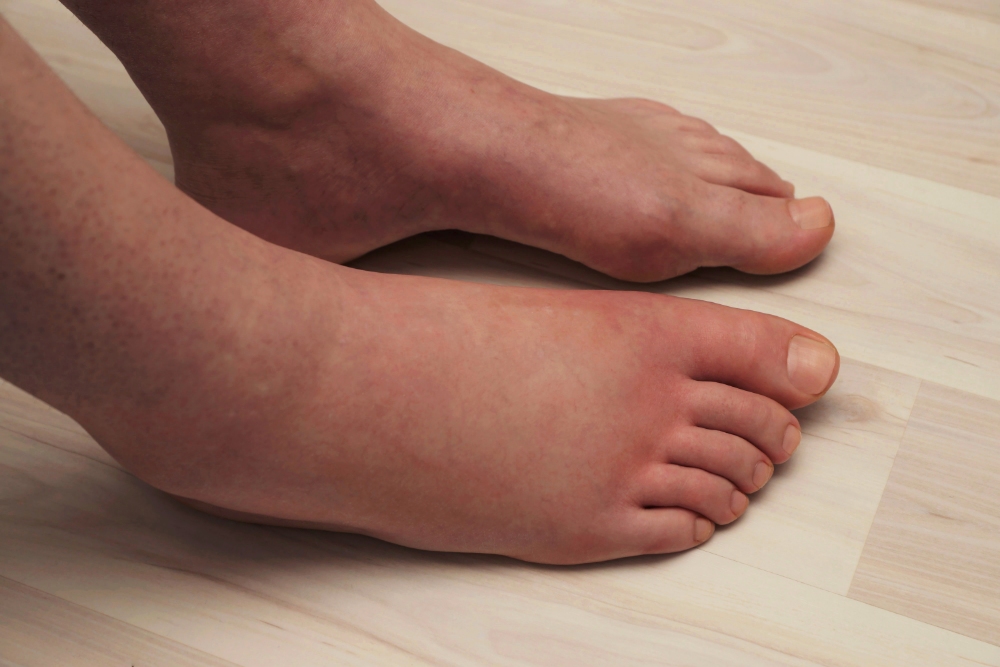Control Edema: Say No To Swelling!
The average golf ball has about 300 to 500 dimples. These divots on the ball can have quite the impact on its trajectory—they optimize the air flowing around the ball by increasing the lift and decreasing the drag. In fact, if there were no dimples on a golf ball, it would cut the distance in half. While dimples are good for golf, they’re bad for your feet and are often a sign of edema, or swelling. Control edema by getting rid of those dimples!
Dimples: A Symptom of Swelling
Try pressing a finger into the swollen area on your feet. If it leaves an impression or dimple after you lift your finger, you may have this problem. Edema—swelling in your feet, ankles, and legs—is caused by excess fluids trapped inside your body tissue. Your blood vessels leak fluid that builds up in the tissues surrounding them. Other symptoms of edema include puffy tissue right beneath your skin and a stretched, shiny appearance to the outer skin.
Edema Affects Pregnant Women and the Elderly
The causes for edema may be linked to pregnancy, premenstrual symptoms, underlying disease, and any medications you’re taking. You can also experience this if you’re elderly, eating too much salt, or if you’ve been sitting down for a long time.
Foods to Avoid
Treating an edema may be as simple (or as difficult, if you love the following foods) as changing your diet. Limit sodium-packed foods like:
-
Bran and oat cereals, pretzels, microwave popcorn, and pancakes from a box mix
-
Canned veggies, frozen veggies with sauce, and vegetable juice
-
Bacon, sausage, lunch meat, hot dogs, ham, canned tuna
-
Processed cheese
-
Fast food, frozen dinners, soup, rice, and pasta mix
-
Ketchup, soy sauce, garlic and celery salt
You may need to take medication and reduce your salt intake in order to keep swelling down. If the swelling is caused by an underlying condition, you will also need treatment for that. For more of an active approach to treatment, a coupling of exercise and massage may reduce your puffy feet and legs. You can also elevate your legs during rest and wear compression stockings to get rid of any built-up fluids. Make sure to protect your feet, keeping them clean and moisturized to prevent infection.
If you have swelling and pain in your leg that won’t go away, you may be experiencing a blood clot in your legs. This can especially happen after you’ve been sitting for a long period of time. Please call a doctor immediately. Other serious conditions that may involve edema include cirrhosis, heart failure, kidney disease or damage, or an inadequate lymphatic system.
Clean eating and a healthy diet is our forte. If you need more help on dietary suggestions to control edema, or are concerned about increased swelling and pain, make an appointment with Sierra Foot & Ankle. Our office in Carson City, Nevada can be reached by phone at (775) 783-8037 or request an appointment online, below.
Get In Touch
Address
2350 South Carson St
Suite 3
Carson City, NV 89701
Contact
Call: (775) 783-8037
Text: (775) 783-8037
Social




© Sierra Foot & Ankle. All Rights Reserved. Privacy Policy.
Web Design by CP Solutions. Marketed by VMD Services.

